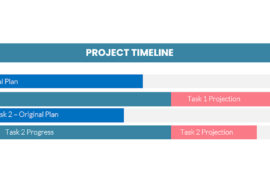 Resource management is a subject that I lecture on often and, perhaps more interestingly, is a popular topic. You might think that after all these years of the promotion of project management practices and tools that resource management would be an old and tired subject but apparently not so much.
Resource management is a subject that I lecture on often and, perhaps more interestingly, is a popular topic. You might think that after all these years of the promotion of project management practices and tools that resource management would be an old and tired subject but apparently not so much.
What is it that has solving resource management challenges be so difficult? The first and most obvious answer is that we don’t all mean the same thing when we talk about it. Depending on who you are your interest in resource management will be very different. The project management tools industry hasn’t made this any easier.
In the last 20 years or so, the pm software industry has promoted the idea of having everyone in a single system working against the same goals. The features and practices that were promoted showed how you could create the project management data for an organization in which data would flow from the very top of the company to each and every individual and then back up again; providing everyone with up to date data from the front lines to management.
It hasn’t been a resounding success for the users. The software industry, on the other hand, has been very successful in entrenching the idea that each and every user will need access to a user license of the project management software. That was a massive change from only a few years earlier in which such software was left in the hands of a few highly trained professionals.
How did we get here?
We started by lumping all possible stakeholders in the resource management process into a single pool of users with homogenous interests. But that’s just not accurate for most organizations. If we are looking at resources from an enterprise project management perspective, it’s worthwhile to distinguish out a few stakeholder roles and how their interests might differ:
Portfolio Decision makers
In the top of the organizational pyramid; these people are typically in senior management and they are the central point of control of the budget. They really want to know what is possible to accomplish with our existing budget this year and what projects we could conceivably take on within our capabilities. Portfolio Decision Makers are interested in resource capacity but they have little interest in who does the work. Their perspective on resource costs are very high level and the work on resources at this level is completely analytical. You might think of them looking at all projects in summary with a focus down to the major skill level.
The decisions that Portfolio Decision Makers will make include:
- What projects to continue work on
- What new projects to accept
- What the priorities of projects are
- Whether to increase or decrease the resource pool
- Whether to push a project’s schedule to later or pull it earlier
- Whether to contract out temporary resource capacity or hire more permanent resources
The input that Portfolio Decision Makers will require includes the duration and skill requirements for new projects, the updated progress of existing projects and an accurate inventory of resources and their skills and attributes.
Project and Resource Managers
In the middle of our organizational pyramid are a small number of professionals. On the project side we have Project Managers and on the resource side we have resource managers. It’s common to think of these two groups as the two axes of a matrix environment.
On one side Project Managers manage the project requirements. They determine what kinds of skills the project will require and organize the project’s schedule around how it must be created. The project manager will also be responsible for managing the project to completion. They must make requests of the Resource Manager for those skills. Project Managers will be interested in hearing from the Resource Managers what the skill inventory is and who will be allocated to their projects. They will also be interested in hearing from the Portfolio Decision Makers what the project priorities are and what new projects are expected to arrive. The Project Managers will be interested in resources analytically at the skill level when they create estimates for the Portfolio Decision Makers to use in their decision-making. They will be thinking of resources in a commitment paradigm as individuals when they think of resource allocation onto their projects.
On the other side, Resource Managers are responsible for their department of people. They must manage the inventory of skills that their people possess and ensure that they can meet the needs of the projects but also take care of the needs of the people under their control. A Resource Manager will be responsible for the advancement of people in their careers as well as their training and experience. They will work to fulfill the requests of project managers with the people they have. Resource Managers will think of the inventory levels of skills analytically when looking to see who to hire and who to train. They will be thinking of resources in a commitment paradigm as individuals when looking to allocation resources to a project manager for a project.
Individuals
The people actually doing the work are the greatest number at the bottom of our organizational pyramid. They have little interest in resources at the analytical level. What resources need to know is what you are requesting them to work on next and what they need to tell you is what effort they have expended on what they’ve been working on most recently.
There are numerous other elements of what we’re talking about but just from this short list, it’s easy to see how resource management can end up going in different directions at once. It isn’t uncommon to see project management tools used analytically with the results pushed to every individual in the organization. It’s also not uncommon for project managers to think of this entire exercise just from their own perspective of getting their project accomplished and for resource managers to think in opposition to this of just managing their people. It’s not surprising to see individuals throw up their hands in despair at being pushed and pulled by different requests and finally being managed by emergency.
So, what is the answer? I find it valuable to distinguish the resource management exercise in two ways.
- First to distinguish analytical interests separate from commitment based interests. Here’s an easy example: A scheduling tool like Microsoft Project is an analytical tool. (It’s no surprise that its biggest competitor is Excel.) We have task data in our agendas such as an Outlook calendar. This is a commitment tool. I write in a task or a calendar event with a start and finish as though to say “I’m committed to do that thing at this time.” We do that even when the commitment is to ourselves like “Vacation”. When we mix the analytical with the commitment elements, our agenda becomes chaos. There was a school of thought a few years ago that said that this data looks the same so it should be the same. Not so.
- Next distinguish the roles of those involved and how their input and output will be managed. Some great software demonstrations show how data can flow upwards and downwards effortlessly but when you look at the groups separately, that doesn’t always make a lot of sense. Data at the Portfolio level will be summary level and may only be looked at once or twice a year. At the project manager analytical level it might be every week. At the individual time reporting level, every day. Should they all be part of the same process? That’s not at all certain. Sometimes it’s better to have an integrated process and less integrated data.
The different needs of the different roles means that handing off data as a report rather than a data transfer may be much more effective. The physical delineation of the data can make a clear moment of hand-off of responsibility in this way.
Building a process will be more than choosing tools and the resource management process is really multiple distinct but interrelated processes. Take your time to make sure all your stakeholders are getting what they need.




